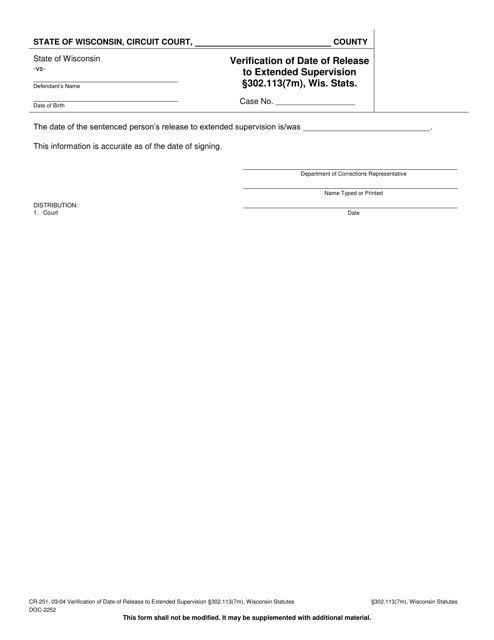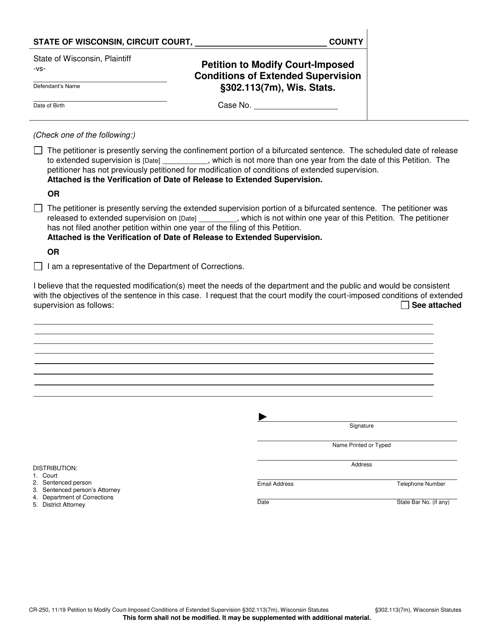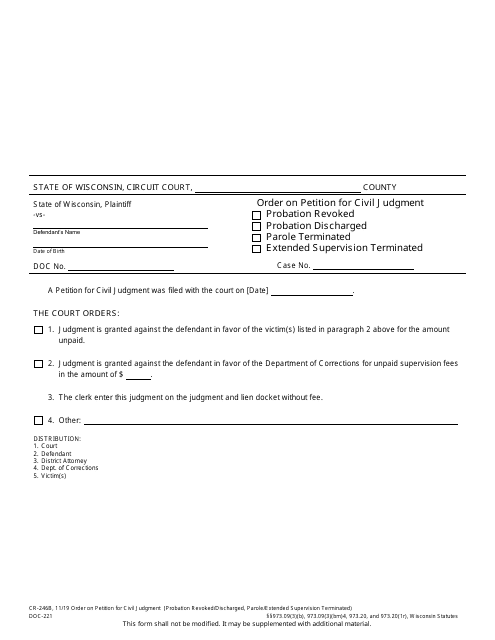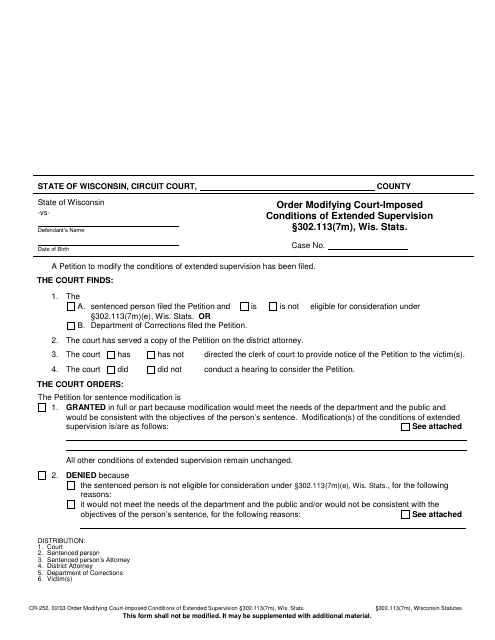Extended Supervision Templates
Extended Supervision: Ensuring Public Safety and Successful Reintegration
When individuals are nearing the end of their incarceration, it is crucial to prepare them for a successful reintegration into society while also ensuring public safety. Extended supervision, also known as community supervision or post-release supervision, plays a critical role in achieving these goals.
Extended supervision is a legal framework that allows for the oversight and support of individuals who have served their prison sentence but need additional monitoring and guidance as they transition back into their communities. This system helps maintain accountability and reduce the likelihood of reoffending by enforcing strict conditions and providing necessary resources for rehabilitation.
Through extended supervision, individuals are provided with the tools and resources they need to rebuild their lives, such as access to housing, employment opportunities, substance abuse treatment, and mental health services. This support aims to address the underlying issues that may have contributed to their criminal behavior and reduce the likelihood of future offenses.
To facilitate the process, various documents are used within the extended supervision system. These documents serve different purposes, such as modifying the mandatory release date, verifying the release date to extended supervision, petitioning to modify court-imposed conditions, and issuing orders regarding extended supervision. These documents ensure that the transition from incarceration to community supervision is carried out lawfully and effectively.
In some jurisdictions, extended supervision is also referred to as parole or mandatory release. Regardless of the terminology used, the primary objective remains the same: to provide individuals with the necessary support and supervision as they reintegrate into society while safeguarding the well-being of the community.
The extended supervision system plays a vital role in reducing recidivism rates and promoting public safety. By implementing evidence-based practices, offering individualized support, and encouraging positive behavior change, extended supervision programs strive to transform the lives of individuals who have served their time. Through effective collaboration between the justice system, community organizations, and individuals under supervision, successful long-term reintegration can be achieved.
So, if you or someone you know is navigating the extended supervision process, understanding the documents and procedures involved is crucial. These documents ensure a smooth transition, promote accountability, and help pave the way for a brighter, law-abiding future.
Documents:
5
This form is used for requesting a modification to the mandatory release date, extended supervision, or good time in the state of Wisconsin. It is used to request changes to the terms of release for individuals who are serving a sentence.
This form is used for verifying the date of release to extended supervision in the state of Wisconsin.
This document is used in Wisconsin to petition the court to modify the conditions of extended supervision, as stated in section 302.113(7m) of the Wisconsin Statutes.
This document is used to order a civil judgment regarding the revocation or discharge of probation, as well as the termination of parole or extended supervision in the state of Wisconsin.
This Form is used for requesting a modification of court-imposed conditions of extended supervision in Wisconsin.





